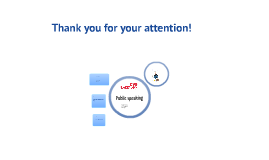public speaking
Transcript: exempt from "all county, city, borough, town, township, road, poor and school taxes" because of it is an "institution of purely public charity." oops! What did we do? aprox. 6,000 students the U of S is by law a non-profit non-profits are tax exempt city council is using scare tactics can not back up claims instead of being thankful, they are being greedy NOT ACCEPTABLE! "the council has no power to decide a variance before the zoning board." Pennsylvania Association of Nonprofit Organizations David L. Thompson, the vice president for public policy for the National Council of Nonprofits. What did they do? NPO's can not support/ advocate against a political entity Dictionary.com "Scranton openly discriminates against nonprofits," employing a 15% tax on parking structures which require payment/ parking permits kick a couple million? been there, done that. Jim Lockwood, Times-Tribune no backlash=easy money University of Scranton on behalf of city council member Janet Evens he proposed that all non-profits, mainly the U, no longer be granted variances by the zoning board pun intended! on Sept. 7th 2012 the U of S filed a law suit against the city of Scranton because their tax exempt status was being over looked variance : "waivers that, under certain circumstances, zoning boards have the right to grant so a development can proceed even though it does not meet all requirements in the city zoning ordinance." The brass "tax" "The variance thing is as close to extortion as you can get and may cross the line. They're focusing on a sector of the economy and saying, 'We can't get you legally, so we're going to do it from the bully pulpit.' " national feed back no variances? by: Breanyn Barnoski war on non-profits "I think the city should vigorously challenge the filing that they are a (charitable) institution." meet council solicitor, Boyd Hughes city's recovery plan asks larger non-profits to increase donations, in lieu of taxes. tax exempt? Mr. Hughes... violation of U of S (and all other non-profits) tax exempt status state law & court law say: "They should kick in a couple million of dollars to the city, because if it weren't for the city, they wouldn't have the institution they have" "council should be notified and we should object, I don't care if it's the medical school, Marywood, a hospital; I don't care if it's a small nonprofit that wants acquire a property, knock it down and put a parking lot in a residential zone, it should be denied. And that's the way we want to get control." please, do not support the tax on ALL non-profits in the city of Scranton ISP trips, service trips, street sweep, UBC at UNC, service days, office of community outreach, food drives, free education look around? Problem? not rhetoric... FACTS non-profit (NPO): "not established for the purpose of making a profit; not entered into for money" "The current effort to single out nonprofit organizations for the denial of legal rights is raising equal protection questions under the U.S. Constitution." City of Scranton the U of S "gross profit" form their 2011 tax return: $42.8 million

















